The Technology Department instructors at Polk County High School strive to lead students to excel in their lives. Not only do they focus on the educational aspects of technology, the instructors show students how imperative using technology correctly in daily life can be. At Polk County High School, our technology teachers are showing students the path to a better tomorrow.
Listed below are the instructors for the Polk County High School Technology Department:
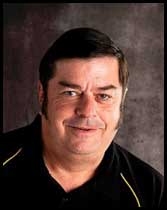
Degrees:
Education:
Teaching Positions:
Miscellaneous:

Degrees:
Interesting Fact: Mr. Adams enjoys playing and coaching golf.
Motto: "A winner is someone who recognizes their God-given talents, works their tail off to develop them into skills, and uses these skills to accomplish their goals."
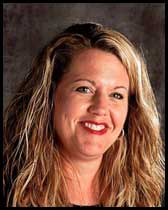
Degrees:
Interesting Fact: Mr.s Thomason enjoys playing charades.
Motto: "Find a way to work smarter, not harder."
The technology courses here at Polk County High School are designed to challenge the students and help them obtain the skills they will need out in the real world. We offer everything from Database Design to Web Design. Each course has its own uniqueness and can range in difficulty, providing every student with opportunities no matter what skill level they have.
Listed below are the courses in the Polk County High School Technology Department:
 The student will analyze and apply database design techniques and management method for organizing and maintaining files. The student will apply keying, typography, and layout and design skills in creating, designing, entering data, importing and exporting data, and printing database object and data. At the completion of the course, students will have database management skills enabling them to design and implement a relational database application. Student proficiency will lead to software certification.
The student will analyze and apply database design techniques and management method for organizing and maintaining files. The student will apply keying, typography, and layout and design skills in creating, designing, entering data, importing and exporting data, and printing database object and data. At the completion of the course, students will have database management skills enabling them to design and implement a relational database application. Student proficiency will lead to software certification.
E-Business Communications is the study of oral, written, and electronic communications in a global society. Components of communication include the sender, the message, the receiver, the feedback, and the channel. The purposes of communication are to build goodwill, persuade, obtain or share information, and build self-esteem.
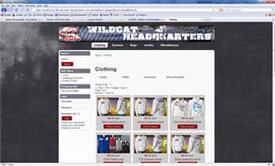 The course will address the use of Internet developing concepts, particularly those related to Web browsers, navigators, search engines, on-line communication methods, home and Web site design concepts, transfer of data, downloading files, security procedures and Internet navigational tools. The student will choose and use appropriate tools when completing Internet applications using the Internet for research and validation of research data for written and oral business communications. Emphasis will be placed on electronic research, security issues, ethics, business report writing, business correspondence, enhancement of oral presentations with electronic media and communications applying current technology.
The course will address the use of Internet developing concepts, particularly those related to Web browsers, navigators, search engines, on-line communication methods, home and Web site design concepts, transfer of data, downloading files, security procedures and Internet navigational tools. The student will choose and use appropriate tools when completing Internet applications using the Internet for research and validation of research data for written and oral business communications. Emphasis will be placed on electronic research, security issues, ethics, business report writing, business correspondence, enhancement of oral presentations with electronic media and communications applying current technology.
Foundations of Technology prepare students to understand and apply technological concepts and processes that are the cornerstone for the high school technology program. Group and individual activities engage students in crating ideas, developing innovations, and engineering practical solutions. Technology content, resources, and laboratory/class-room activities apply student applications to science, mathematics and other school subjects in authentic situations.
 This course will focus on the three dimensions of technological literacy: knowledge, ways of thinking and acting, and capabilities, with the goal of students developing the characteristics of technologically literate citizens. It will employ teaching/learning strategies that enable students to build their own understanding of new ideas. It is designed to engage students in exploring and deepening their understanding of engineering. And makes use of a variety of assessment instruments to reveal the extent of understanding.
This course will focus on the three dimensions of technological literacy: knowledge, ways of thinking and acting, and capabilities, with the goal of students developing the characteristics of technologically literate citizens. It will employ teaching/learning strategies that enable students to build their own understanding of new ideas. It is designed to engage students in exploring and deepening their understanding of engineering. And makes use of a variety of assessment instruments to reveal the extent of understanding.
This course is one component of the overall technology engineering education program designed to prepare students for the technological world by preparing them to assume the roles of informed voters, productive, workers, and wise consumers. The course will focus on the development of knowledge and skills regarding the following aspects of technology: 1) its evolution, 2) systems, 3) core concepts, 4) design, and 5) utilization.
Content provides students the opportunity to acquire basic foundational knowledge and skills in both theory and practical applications in direct current, alternating current, and power supply circuits. Course content includes fundamentals of networking concepts for personal computers (PC), networking, determining system requirements, setting up equipment, and performing installation tests for the end user.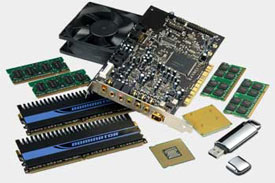
Content provides the opportunity to evaluate and install peripheral devices and become familiar with operating systems. Course content provides students the opportunity to acquire basic fundamental skills in both theory and practical applications of language, structure, and typography. Standards 11 through 13 stress layout and design guidelines as applied in the design of markup language documents. Course content will be delivered through virtual training and hands-on methods. Competencies mastered during this course help prepare students toward acquiring A+ and/or Net+ certification and/or Web design employment.
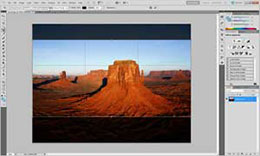 Visual Art Communications is a course that provides a foundation in aesthetic concepts and applies these concepts to the visual art, design, printing, and photography industries. Course content provides the opportunity to acquire marketable skills by examining both the visual communications industry and its career opportunities and by developing leadership, teamwork, and technical skills. Varying degrees of aesthetics are required, along with the ability to interpret many aspects of life and technology. Course content is also related to other pathways. Art and Applied Art relates to Performing Arts; Graphic Design relates to Printing Technologies; and Photographic Art relates to Printing Technologies, Journalism, Broadcasting, and Film.
Visual Art Communications is a course that provides a foundation in aesthetic concepts and applies these concepts to the visual art, design, printing, and photography industries. Course content provides the opportunity to acquire marketable skills by examining both the visual communications industry and its career opportunities and by developing leadership, teamwork, and technical skills. Varying degrees of aesthetics are required, along with the ability to interpret many aspects of life and technology. Course content is also related to other pathways. Art and Applied Art relates to Performing Arts; Graphic Design relates to Printing Technologies; and Photographic Art relates to Printing Technologies, Journalism, Broadcasting, and Film.
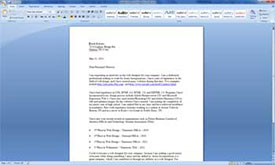 Students will prepare business and academic report, etc. The student will demonstrate a combination of input skills (advanced keyboarding, scanning, speech recognition, handwriting recognition, and the use of a mouse) in the production of mailable business documents. Formatting, typography and layout and design concepts are applied in document preparation of business letters, forms, invoices, manuscripts, and tabulated and columnar information.
Students will prepare business and academic report, etc. The student will demonstrate a combination of input skills (advanced keyboarding, scanning, speech recognition, handwriting recognition, and the use of a mouse) in the production of mailable business documents. Formatting, typography and layout and design concepts are applied in document preparation of business letters, forms, invoices, manuscripts, and tabulated and columnar information.
Video Production is offered in the audio and video technology sub-cluster to students who have completed Media Concepts or obtained instructor's approval. Course content focuses on electronic media production (EMP) technologies utilizing simulated and/or real-life projects. This course centers on production of various EMP products, including, commercials, news, music, interactive, and industrial programming.
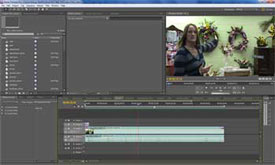
The student will gain valuable insight into the many facets of EMP production, including, but not limited to concept creation, scripting, sound design, visual design, engineering, editing, budgeting, and producing, as well as exploring some of the latest advances in industry technology. Upon completion of this course, students will be prepared to pursue advanced coursework.
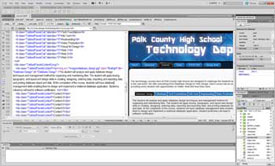 Web Design I is the first level of Web Page Design, and it prepares students with work-related skills for advancement into postsecondary education or industry. Course content includes exposure to basic Web design and the dynamics of networking/internetworking, Web hosting and Web design in e-commerce.
Web Design I is the first level of Web Page Design, and it prepares students with work-related skills for advancement into postsecondary education or industry. Course content includes exposure to basic Web design and the dynamics of networking/internetworking, Web hosting and Web design in e-commerce.
The course content provides students the opportunity to acquire fundamental skills in both theory and practical application of Web design and of leadership and interpersonal skill development. Laboratory facilities and experiences simulate those found in the Web Page Design and construction industry. Web Site I Foundations. CIW Associate Foundation Certification.
Web Design II is the second level of Web Page Design concentration, and it prepares students with work-related skills for advancement into postsecondary education or industry. Course content includes exposure to basic and advanced Web design, pixilated and vector-based Web graphics, Web animations, dynamics of Web hosting, and Web design in eCommerce.

The course content provides students the opportunity to acquire fundamental skills in both theory and practical application of Web design and of leadership and interpersonal skill development. Laboratory facilities and experiences simulate those found in the Web page design and Web page construction industry. Further, this course provides for and directly maps to the Certified Internet Webmaster "Site Designer" national certification examination. Web Page Design II-Site Designer, CIW Site Designer.
Web Design III or eCommerce corresponds to the CIW certification "Web eCommerce" which is the third level of Web Page Design. This course prepares students with work-related skills for advancement into postsecondary education or industry.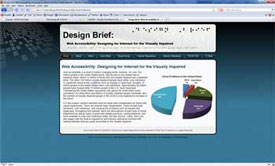
Course content includes exposure to Web design in eCommerce with marketing, customer relations, and commercial Web site publication. The course content provides students the opportunity to acquire fundamental skills in practical application of Web development, leadership, and interpersonal skill development. Laboratory facilities and experiences simulate those found in the Web page design and Web page construction industry.
The technology clubs and organizations here at PCHS are designed to allow our students to expand their knowledge and apply their skills in events such as regional, state, and national competitions. Polk County has been actively involved in National Organizations such as TSA, FBLA, and SkillsUSA. We also offer smaller, school based clubs, such as the VEX Robotics and DewCrew.
Listed below are the clubs involved with the Polk County High School Technology Department:
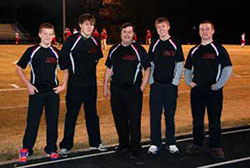 The Dew Crew was formed in 2002 because students wanted a way to use their video skills, and provide a meaningful way to contribute to the football team. They volunteered to film the games from the sidelines and press box. The first showing at the annual Football Banquet was such a big hit that they quit inviting guest speakers to the banquet, and now count on the Highlight DVD for memories and inspiration.
The Dew Crew was formed in 2002 because students wanted a way to use their video skills, and provide a meaningful way to contribute to the football team. They volunteered to film the games from the sidelines and press box. The first showing at the annual Football Banquet was such a big hit that they quit inviting guest speakers to the banquet, and now count on the Highlight DVD for memories and inspiration.
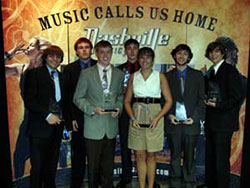 FBLA-PBL is the largest business career student organization in the world. The high school division has 215,000 members, while the postsecondary division reaches over 11,000 college students. The newest group, FBLA-Middle Level, is showing remarkable growth with over 20,000 student members. Finally, the Professional Division has reached over 3,000 members. Over 11,000 advisers round out the group. Exclusive membership and career recognition programs are designed for each division to provide additional personal and chapter development opportunities.
FBLA-PBL is the largest business career student organization in the world. The high school division has 215,000 members, while the postsecondary division reaches over 11,000 college students. The newest group, FBLA-Middle Level, is showing remarkable growth with over 20,000 student members. Finally, the Professional Division has reached over 3,000 members. Over 11,000 advisers round out the group. Exclusive membership and career recognition programs are designed for each division to provide additional personal and chapter development opportunities.
The mission of the Future Business Leaders of America - Phi Beta Lambda is to bring business and education together in a positive working relationship through innovative leadership and career development programs.
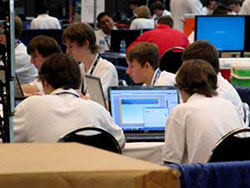 SkillsUSA is an applied method of instruction for preparing America's high performance workers in public career and technical programs. It provides quality education experiences for students in leadership, teamwork, citizenship, and character development. It builds and reinforces self-confidence, work attitudes, and communications skills. It emphasizes total quality at work: high ethical standards, superior work skills, life-long education, and pride in the dignity of work. SkillsUSA also promotes understanding of the free-enterprise system and involvement in community service.
SkillsUSA is an applied method of instruction for preparing America's high performance workers in public career and technical programs. It provides quality education experiences for students in leadership, teamwork, citizenship, and character development. It builds and reinforces self-confidence, work attitudes, and communications skills. It emphasizes total quality at work: high ethical standards, superior work skills, life-long education, and pride in the dignity of work. SkillsUSA also promotes understanding of the free-enterprise system and involvement in community service.
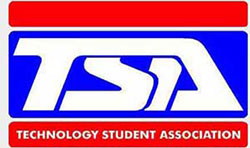 The Technology Student Association fosters personal growth, leadership, and opportunities in technology, innovation, design, and engineering. Members apply and integrate science, technology, engineering and mathematics concepts through co-curricular activities, competitive events and related programs.
The Technology Student Association fosters personal growth, leadership, and opportunities in technology, innovation, design, and engineering. Members apply and integrate science, technology, engineering and mathematics concepts through co-curricular activities, competitive events and related programs.
The VEX Robotics Club is a new after school program here at Polk County High School. It offers our students a chance to get involved in a whole new world of robotics, so that they may expand their knowledge of robotics and meet other students interested in robotics.
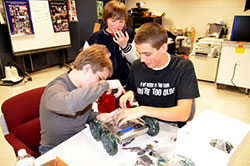 According to VEX: "The VEX Robotics Design System offers students an exciting platform for learning about areas rich with career opportunities spanning science, technology, engineering and math (STEM). These are just a few of the many fields students can explore by creating with VEX Robotics technology. Beyond science and engineering principles, a VEX Robotics project encourages teamwork, leadership and problem solving among groups. It also allows educators to easily customize projects to meet the level of students' abilities. The affordable VEX platform is expanding rapidly and is now found in middle schools, high schools and university labs around the globe. Robotics hobbyists also appreciate the advanced capabilities of the VEX System."
According to VEX: "The VEX Robotics Design System offers students an exciting platform for learning about areas rich with career opportunities spanning science, technology, engineering and math (STEM). These are just a few of the many fields students can explore by creating with VEX Robotics technology. Beyond science and engineering principles, a VEX Robotics project encourages teamwork, leadership and problem solving among groups. It also allows educators to easily customize projects to meet the level of students' abilities. The affordable VEX platform is expanding rapidly and is now found in middle schools, high schools and university labs around the globe. Robotics hobbyists also appreciate the advanced capabilities of the VEX System."
Our first order of business was to decide on a target audience. This audience includes technical course students, teachers, parents of students, people in the community, and anyone else wanting to know about Polk County High School's TSA, the technical department of PCHS, or the future of manned and unmanned space travel.
We then divided the content involved with this competition among three sites, and we established what design to use on each site. Similar yet different designs were used for each site, because we wanted the Design Brief, the PCHS TSA website, and the PCHS Technology Department website to be distinguishable from each other .The similarities reside in the basic design of each such as the menus and page layout, but the content remains very different.
The roles of each member on our team were also decided upon at this time. The high school technology department's website and the high school TSA chapter's website were each assigned to one person while the design brief, being the largest of the three sites, was assigned to the remaining two web developers on our team. We had a graphic designer to create the banners and edit any images needed. Next, we created a timeline for our websites. We needed to have certain parts of our project completed at various times. This ensured that we would stay on track and accomplish all of our goals. Our team collaborated using Google Docs, because we are all in different classes. Information and updates among our team were shared using Google Docs, and ideas were communicated through the use of Google Docs.
Before a computer was touched, blueprints for each site were drawn. To decide on what pages to have and what content to include on each page, we made a plan of what we wanted our site to cover. On the Design Brief, we included the past capabilities of space travel using a clean, easy-to-use timeline. We also decided on which current and future governmental space missions to go over (International Space Station, Orion MPCV, Juno, Dawn, and Curiosity) and which current and future commercial space missions to go over. We also stated a solution pertaining to the future of space flight. For the TSA and Technology Department sites, we decided to include all pertinent information, such as the clubs, instructors, courses, and upcoming events in our technology department, and the advisors, officers, a brief description, and the past awards won for the chapter TSA site. Lastly, a contact us page was included on the TSA and Technology Department sites to give users an easy way to get in touch with us, and a copyright page was included on all three sites to explain the web development process, show where we obtained pictures/information and which programs would be used in the development of our site. After this was done, we brainstormed on designs for our websites. We wanted our sites to match, so they could easily be distinguished as part of a group, and we wanted the sites to look professional and clean. We eventually decided on a gradient with a different color and a fading design in the top left for the TSA and Technology Department sites. On the Design Brief, we chose a sleek looking starry background with a blue galaxy coming out of the bottom of the page. All the sites used a 'floating' menu system and rounded corners on each section of the site to look modern and professional.
After the blueprints were drawn and a design decided upon, research was conducted. Knowledge of past space missions and current and future governmental missions was obtained through the use of NASA (National Aeronautics and Space Administration). Then, research had to be done pertaining to current and future commercial missions. This information came from SpaceX and Bigelow Aerospace We also got information about TSA from the National TSA site, and we got information about SkillsUSA and FBLA from their respective national sites.
The site was then created from scratch using Adobe Dreamweaver CS5. We created the the first page according to our blueprints, and we created the rest of the pages of our website from that page. Each of our sites, PCHS TSA, PCHS Tech. Dept., and the Design Brief, have links to each other. We created spry tabbed panels within most of our pages to include the content without causing a page with excessive length. The content was made using Microsoft Word 2007 and then inserted into the pages of the site. Also, the images in the site were either obtained from iClipart, NASA, TSA, and the instructors at our school or taken as a screenshot during development. All of the images were then edited using Adobe Photoshop CS5. JS Lightbox was incorporated to show our screenshots at a larger scale in an easy-to-use way. We considered using one of the online services to generate our timeline for us, but instead, in order to add customization and appeal, we used Adobe Edge Preview 4 to create our interactive timeline and moving header. It uses pure HTML 5, CSS3, and Javascript. This enables it to be viewed on a larger variety of platforms, including iPhones and iPads.
Because of the Edge banner, we also made a separate version of our Design Brief in the event that users have Internet Explorer 8 or earlier, because Adobe Edge Preview 4, which was used to make the banner on each page, is not compatible with versions earlier than IE9. When a user goes to our website with an earlier version of IE, they will automatically be redirected to the compatible site, which uses regular images for the banner instead. To expand platform compatibility, we created mobile versions of all three sites using jQuery in Dreamweaver. If a user goes to one of our websites using a smartphone or tablet, they will automatically be redirected to a mobile version of our site that is much easier to view and use on mobile devices. WOW Slider was incorporated on our home pages to show pictures of activities relating to the specific page that each slide is linked to and to provide another easy way to find the other sites in the Webmaster competition along with the mobile versions of each site. WOW Slider put the pictures into an interactive banner which links each picture to the corresponding page or site. Lastly, Google Calendar was used to show the upcoming events on the technology department and TSA sites and the upcoming launches on the Design Brief.
Lastly, testing was done. We tested our websites on many of the latest browsers manually, which showed us excellent compatibility firsthand, but we also used Adobe BrowserLab to test our websites on a PC, Mac, and several mobile devices.
We found that our websites are compatible on Windows with Chrome 8+, on Windows and Mac with Firefox 3+, on Windows with Internet Explorer 8+, and on Mac with Safari 3+. Our site is also mostly compatible on many earlier browsers, including IE8, because we used a separate version of our site specifically for earlier versions of IE. When viewing on a mobile or touch device, users will automatically see the mobile version of our site. It works on all popular devices/platforms.
Notice: The following programs were used in the development of this Technology Department website.
Notice: The following sites were used in the research development of our sites. All summaries were in our own words. Any images not obtained from the websites listed here were either photos or screenshots taken by us.
Research information was obtained from:
Bigelow Aerospace. Web. 29 Jan 2011. <http://www.bigelowaerospace.com/>.
Information about the BA330 spacecraft was obtained from this website.
NASA. Web. 13 Jan 2011. <http://www.nasa.gov/>.
Information about the future of NASA mannned and unmanned spaceflight was obtained from this website.
National FBLA. Web. 20 Jan 2011. <http://www.fbla-pbl.org/>.
Information about the FBLA organization was obtained from this site.
National SkillsUSA. Web. 20 Jan 2011. <http://www.skillsusa.org/>.
Information about the SkillsUSA organization was obtained from this site.
National TSA. Web. 20 Jan 2011. <http://www.tsaweb.org/>.
Information about the TSA organization was obtained from this site.
SpaceX. Web. 5 Feb 2011. <http://www.spacex.com/>.
Information about the Dragon spacecraft was obtained from this site.
Images and Videos were obtained from:
Bigelow Aerospace. Web. 29 Jan 2011. <http://www.bigelowaerospace.com/>. (With Permission)
An image of the BA330 spacecraft was obtained from this site.
iClipart. Web. 8 Feb 2012. <http://www.iclipart.com/>. (Free to use with a subscription, which we have)
Several images were used from this site for backgrounds and headers.
NASA. Web. 13 Jan 2011. <http://www.nasa.gov/>. (Free to use for everyone)
Videos about and images of various NASA spacecrafts and spaceflight programs were obtained from this site.
National TSA. Web. 20 Jan 2011. <http://www.tsaweb.org/>. (Free to use for TSA Members)
An image of the TSA logo was obtained from this site.
SpaceX. Web. 5 Feb 2011. <http://www.spacex.com/>. (With Permission)
A video about the Dragon spacecraft was obtained from this site.